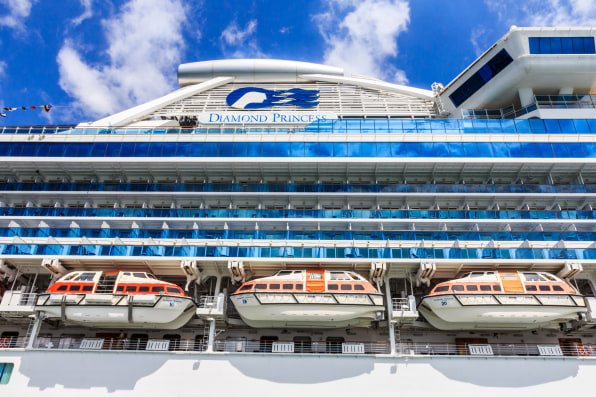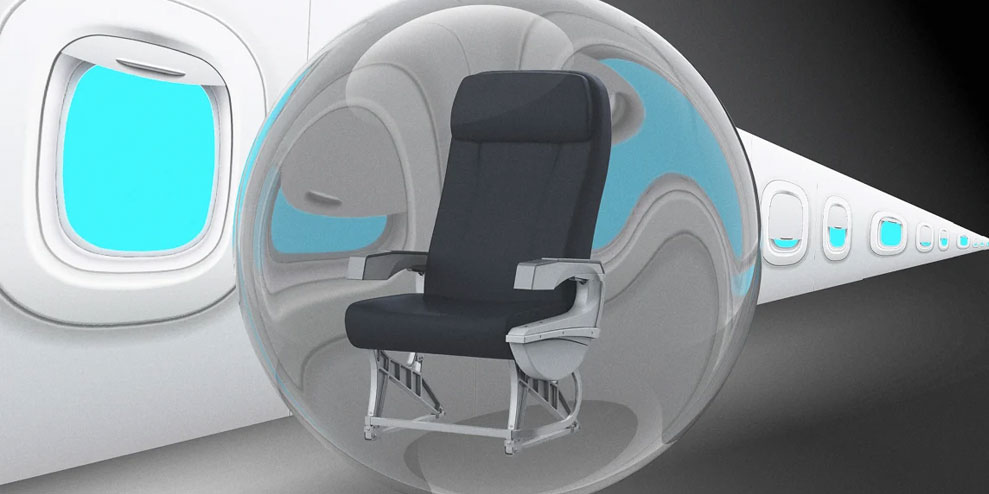We’re designing travel wrong for pandemics, as the new coronavirus has made abundantly clear. The good news: It can be fixed.
When Qingyan Chen, professor of mechanical engineering at Purdue University, explains the overlooked danger of airborne pathogens, he offers a simple analogy. “I hold a cup of water. I take a drink. Would you drink? You definitely say no. But in a room, I breath out air. We’re staying in the same room. Can you hold your breath? No.”
Chen is one of the foremost experts on the indoor environment; specifically, how air moves through spaces like aircraft cabins and cruise ships. And he wants to see transit redesigned to accommodate cleaner air and safer travel in the face of a future full of inevitable, global pandemics.
“I think they should change [ventilation]fundamentally—including airplanes, cruise ships, buses, even subways,” says Chen. “Because current ventilation system design tries to mix the air as much as you can, so you just breathe everyone’s concentration.”
Chen’s obsession has driven him to extremely specific research projects, like developing mathematical models for coughing. That’s not exactly cocktail conversation, but with the rise of the novel coronavirus, he’s offering perspective to everyone from the BBC to Carnival Corporation—the latter of which called him for advice yesterday following a botched quarantine that infected 700 people and killed 8. Chen is eager to spread his message: If ventilation systems don’t properly suck and filter away pathogens before other people breathe them in, a contagion will spread. It’s time to redesign transportation for the age of pandemics.
SHARED AIR IS A PROBLEM
Experts agree that COVOID-19 seems to be primarily transmitted through touching someone sick, touching something someone sick has touched, or coughing small particulates into the air. And these types of virility fall short of what we classify as a fully airborne pathogen like anthrax bacteria spores, which could blanket a city with a cloud of infection.
But Chen cautions that in his own research on influenza circulation, these distinctions don’t matter in a small space. In cramped travel situations, you are susceptible to breathing in the virus, end stop.
He says that drawing the line between something you’d sneeze (to float a few feet) and a truly airborne pathogen (that might fly a mile or more in the air) is something of a false distinction when you’re inside a small space. (Chen has even held mustard to people’s noses, forcing them to sneeze, to reach this finding.)
“A lot of larger droplets will fall down to the floor because of gravity, but we find particles with the size 20 micrometers or smaller could be airborne for a long, long time,” he says.
As Chen outlines, whether it’s a plane, building, or cruise ship, the core approach for public health is the same: Circulate air as often as possible, giving people fresh and filtered air as often as you can. On planes, air circulates every six minutes. In buildings and ships, air circulates every 10. But there are still major distinctions as to what air circulation actually equates to, and with viruses, the devil is in the details.
On planes, people are provided 10 liters of air per second. Planes pull air in through the floor vents along the wall. All vents lead into the same core system, where the air is filtered, and the old air is cut with 50% fresh air from outside, then spit out through the ceiling. So about half the air you’re breathing at any moment is old.
Meanwhile, on cruise ships—like inside buildings—people have something more like 30 liters of air per second. About 10 liters of that air will be fresh, and 20 or more will be recirculated. In ships, all air is sucked from your room into the hallway before it’s filtered, meaning that if you’re walking in a common space, you’re getting a stew of old air from every room around you.

CHANGE THE FILTERS ON CRUISE SHIPS
It’s worth noting that the CDC is warning against taking long plane trips and cruises alike. Planes, though, do a better job at actually filtering the air itself, because they use HEPA filters, which can catch 99% or more of viruses that are .3 microns or larger. On top of that, airlines want to do more to scrub the air clean: United told Fast Company that it will begin using an electrostatic fogger, which pumps vaporized disinfectant into the air between flights in major hubs, to further clean the air.
Ships and buildings, however, generally use lower-grade filters, which are less taxing on HVAC systems, but also only catch somewhere between 20% to 40% of viruses passing through.
“That’s why when Diamond Princess was under quarantine, I feel they did a terrible job,” says Chen of the disaster that infected 700 people and killed 8. “They didn’t let people get off.” Carnival failed to disinfect the ship upon learning there was a carrier of coronavirus on board. Then, as the ship docked for two weeks in Yokohama, Japan, most people were confined to their own quarters rather than allowed to go to land in a larger quarantine. Those infected with coronavirus were expelling the virus into the ship’s shared air, which could be sucked right out their door and, in a matter of minutes, into someone else’s room.
When Chen spoke to Carnival Corporation, the owner of Diamond Princess yesterday, he gave the company one piece of advice, he says: Upgrade all of your ships to use HEPA filters, much as he suggested in a 2016 paper on the topic. Yes, he admits, this would require some retrofitting to their HVAC systems to push air through thicker filters with more force, but based upon the centralized location of HVAC systems on ships, he thinks it’s entirely possible, even, in his words, “easy” for them to do.
UPDATE THE DESIGN EVERYWHERE
Another option, on both planes and cruise ships, is to change the way that air circulates entirely—and it’s also not that difficult to do. In 2018, Chen’s team mocked up a 737 interior with a novel design for air circulation. Rather than settle for the centralized model, in which we constantly breathe the air of people within a few rows of us (and the eventual same air as the entire plane), he developed a system that allows you to breathe air in your own, invisible bubble.
In this system, every seat is fit with a personal HEPA filter by your feet. It spits out air constantly. That air rises, naturally, as it warms in contact with your body. Then it’s sucked inside the ceiling above your head, and largely expelled. This system would largely reduce recirculated pathogens, and it could work, not just in planes, but anywhere with a fixed seat, like buses and even movie theaters. “If a manufacturer wants to do it, it can become product in a matter of a few weeks,” he says.
On cruise ships, Chen’s team has proposed a very similar design in yet another research paper, albeit at a larger scale. He suggests that air should come into a room around the floor boards, or even through ventilation in the floor itself. Again, the air would naturally heat in contact with people, and it would rise to the ceiling to be expelled. “You sop up the dirty air from [overhead],” says Chen, rather than the central hallways of the ship.
After retrofitting the HVAC system to work this way, Chen cautions that cruise ships might feel hotter as a result. The cold air would always be at your feet, while your head would experience a microclimate that would be warmer, and stuffier, by nature. That said, Chen has been tracking a similar approach to air circulation in buildings across Europe in particular, and believes they hold a lot of promise for ships. And while it’s almost certainly too late to repair cruise ships to stop the coronavirus crisis, we can absolutely improve what we consider best practices in safe travel for the future.
“This type of infectious disease will come every few years,” warns Chen. “I started doing research when SARS broke out in 2004. Then another time was the 2009 influenza from Mexico, which killed 150,000 people around the globe. Today we have coronavirus. Every couple of years, this type of thing will come back.”
–
This article first appeared in www.fastcompany.com
Seeking to build and grow your brand using the force of consumer insight, strategic foresight, creative disruption and technology prowess? Talk to us at +9714 3867728 or mail: info@groupisd.com or visit www.groupisd.com

